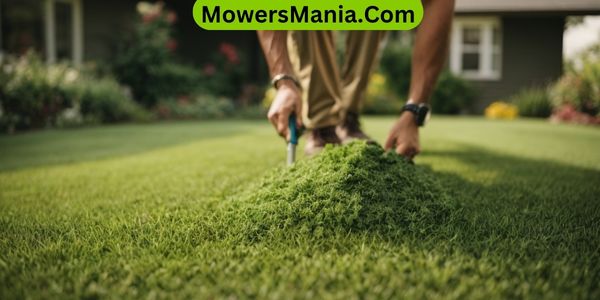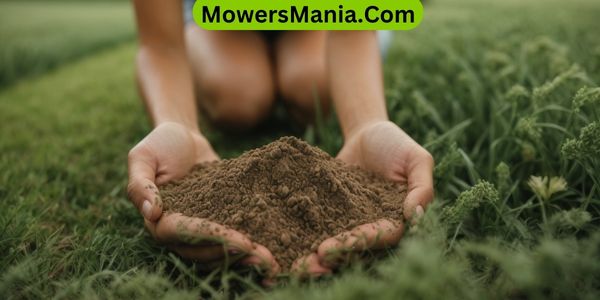Looking to boost your lawn’s health and appearance? You’ll need the right fertilizer. Understanding your lawn’s needs, soil composition, and environmental impact is crucial.
In this article, we’ll explore the types of fertilizers available and how to choose the best one for your lawn.

Let’s get started on making your lawn the envy of the neighborhood.
Understanding Your Lawn’s Nutrient Needs
Assess your lawn’s specific nutrient requirements based on its soil composition, grass type, and environmental conditions.
Different types of grass require different levels of nutrients. For example, warm-season grasses like Bermuda grass or Zoysia grass have different needs compared to cool-season grasses like Kentucky bluegrass or fescue.
Understanding your soil composition is crucial as well. Sandy soils drain quickly, which means nutrients can leach away, while clay soils hold onto nutrients more, potentially leading to nutrient imbalances.
Environmental conditions such as sun exposure, rainfall, and temperature also play a role in determining your lawn’s nutrient needs. For instance, a lawn in a hot, sunny area may require more nutrients to maintain its health compared to a lawn in a cooler, shaded area.
Types of Fertilizers and Their Benefits

When selecting the right fertilizer for your lawn, consider the various types available and their specific benefits. Understanding the different types of fertilizers will help you make an informed decision that best suits your lawn’s needs.
Here are some common types of fertilizers and their benefits:
- Granular Fertilizers: These are easy to apply and provide a slow release of nutrients, promoting long-term growth and health for your lawn.
- Liquid Fertilizers: They’re quickly absorbed by the grass, making them effective for providing a rapid boost of nutrients to your lawn.
- Organic Fertilizers: These are derived from natural sources and promote soil health, microbial activity, and long-term sustainability for your lawn.
Each type of fertilizer offers unique advantages, and understanding these benefits will allow you to choose the best option for your lawn. Consider factors such as your lawn’s current health, the time of year, and the specific nutrient requirements to make an informed decision.
Assessing Your Soil’s Composition
Once you have determined the type of fertilizer best suited for your lawn, it’s important to assess your soil’s composition to ensure optimal nutrient absorption.
Understanding your soil’s composition will help you make informed decisions about the type and amount of fertilizer to use.
To assess your soil, you can conduct a simple test using a soil test kit or send a sample to a professional laboratory for analysis.
Here’s a helpful table to guide you through assessing your soil’s composition:
| Soil Component | Description |
|---|---|
| Sand | Larger particles, quick drainage |
| Silt | Medium-sized particles, holds moisture well |
| Clay | Smallest particles, retains water, slow drainage |
| Organic Matter | Decomposed plant and animal material |
| pH Level | Measure of soil acidity or alkalinity |
Environmental Considerations for Fertilizer Use

To minimize environmental impact when using fertilizer, consider the following factors:
- Proportions of sand, silt, clay, and organic matter in your soil
- pH level of your soil
Understanding these factors will help you select a fertilizer that meets your lawn’s needs while reducing the risk of nutrient runoff into water bodies or leaching into groundwater.
Environmental Considerations for Fertilizer Use
- Nutrient Content: Choose a fertilizer with the appropriate balance of nitrogen, phosphorus, and potassium for your specific soil and grass type. This will help prevent excess nutrients from polluting nearby water sources.
- Slow-Release Formulas: Opt for slow-release fertilizers, which gradually provide nutrients to the soil over time, reducing the likelihood of nutrient runoff and minimizing the need for frequent applications.
- Environmental Impact: Consider the environmental impact of the fertilizer’s production and transportation. Look for products that are sustainably sourced and produced, as well as those with minimal packaging to reduce waste.
Choosing the Right Fertilizer Application Method

Considering the environmental impact and nutrient needs of your lawn, you should apply the chosen fertilizer using a suitable method to ensure effective uptake and minimal waste.
There are several application methods to consider, each with its own benefits and drawbacks.
Here’s a comparison to help you choose the right method for your lawn:
| Fertilizer Application Method | Description |
|---|---|
| Broadcast Spreading | Uniformly distributes fertilizer over large areas, but can lead to waste if not done carefully. |
| Drop Spreading | Provides more precise application and is suitable for larger lawns, but requires careful calibration. |
| Handheld Spreader | Offers flexibility for smaller lawns and spot treatments, but may not be efficient for larger areas. |
| Liquid Application | Delivers nutrients directly to the soil and is easily absorbed, but may require more frequent applications. |
Frequently Asked Questions (FAQs)
Can I Use the Same Fertilizer for My Lawn and Garden Plants?
Yes, you can use the same fertilizer for your lawn and garden plants. However, it’s important to choose a balanced fertilizer that meets the specific needs of both your lawn and garden to ensure healthy growth.
What Is the Best Time of Year to Fertilize My Lawn?
You should fertilize your lawn in the early spring or late fall for the best results. This helps promote healthy growth and strengthens the roots. Make sure to choose the right fertilizer for your specific grass type.
How Can I Tell if My Lawn Is Getting Too Much or Too Little Fertilizer?
You can tell if your lawn is getting too much or too little fertilizer by observing the grass. If it’s excessively green and growing rapidly, it might be getting too much. If it’s yellowing or weak, it could be getting too little.
Are There Any Natural or Organic Alternatives to Chemical Fertilizers?
Yes, there are natural and organic alternatives to chemical fertilizers. Options like compost, manure, and organic fertilizers can provide nutrients to your lawn without the use of synthetic chemicals, promoting a healthier environment.
Is It Safe to Use Fertilizer if I Have Pets or Children Playing on the Lawn?
Yes, it’s safe to use fertilizer if you have pets or children playing on the lawn. Just make sure to follow the instructions and keep them off the lawn until the fertilizer has been watered in.
Conclusion
So, when it comes to choosing the right fertilizer for your lawn, it’s important to consider the following factors:
- Your lawn’s specific nutrient needs
- The type of fertilizer that will best meet those needs
- The composition of your soil
- Any environmental concerns
By taking these factors into account, you can ensure that you’re selecting the best fertilizer for your lawn and promoting a healthy, vibrant outdoor space for your enjoyment.



